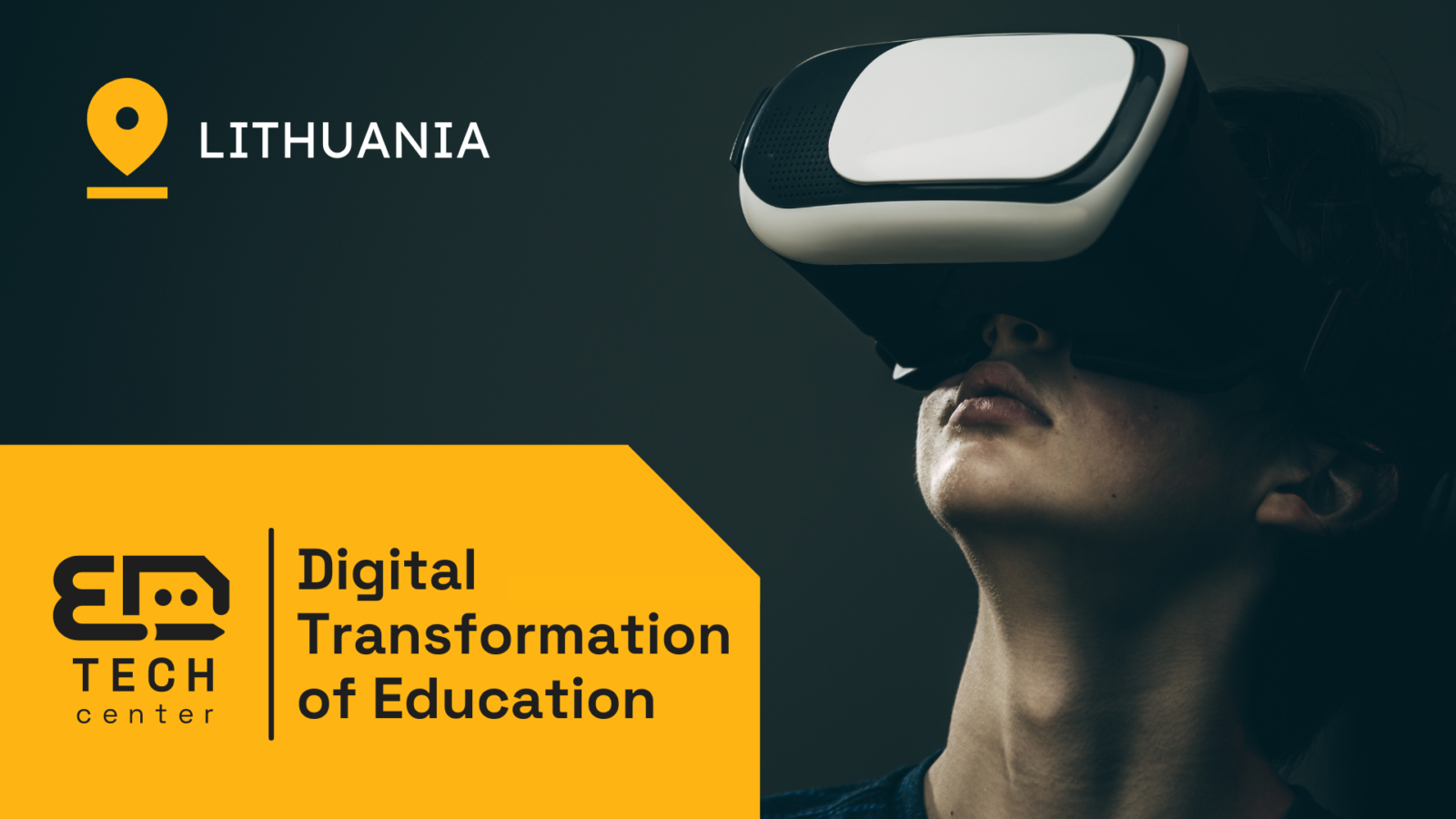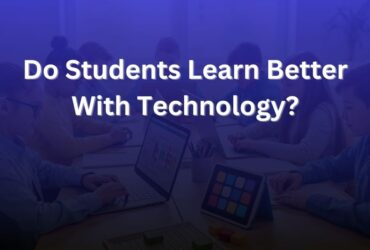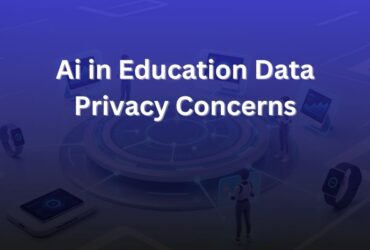Educational technology enhances learning processes and outcomes. It provides interactive and personalized educational experiences.
The rise of educational technology represents a paradigm shift in how instruction is delivered and received. With the advent of digital tools, students and educators can benefit from unprecedented access to information and resources. Tech-infused education makes learning more engaging and accommodates diverse learning styles through multimedia and interactive content.
This integration supports collaboration and communication, preparing students for a digital world. Educators can track progress in real-time, allowing for more targeted teaching strategies. As we move further into the digital age, educational technology stands as a cornerstone in developing future-ready students capable of thriving in an increasingly complex global environment. Effective utilization of educational technology is crucial for equipping learners with the skills they need to succeed.
The Rise Of Educational Technology
Educational Technology, or edtech, transforms how we learn. Today’s classrooms look nothing like those a century ago. Chalkboards have become smartboards. Textbooks have turned into tablets. Learning extends far beyond school walls. This shift is about more than just gadgets; it’s about access, efficiency, and personalization. Let’s explore this fascinating evolution and address the challenges currently shaping the future of education.
Historical Progress In Edtech
Through the decades, educational technology has made remarkable strides. Early tools like the overhead projector revolutionized teaching methods. Then computers entered classrooms, creating new learning possibilities. The internet’s birth caused a seismic shift, connecting learners worldwide. Now, interactive software and e-learning platforms help students at every level.
- 1920s: Radios emerge as instructional tools.
- 1950s: Overhead projectors become popular.
- 1960s: Television begins educational broadcasting.
- 1980s: Personal computers start educational applications.
- 1990s-2000s: Internet leads to online courses and resources.
- Today: Virtual reality and AI customize learning experiences.
Current Educational Challenges
Modern schools face complex issues. One major challenge is the digital divide. Not all students have equal access to technology. Equity is a hot topic. Schools struggle to adapt curriculum to ever-changing tech. Teachers need training in these new tools. Despite these hurdles, edtech remains a powerful ally in improving education for everyone.
| Challenge | Impact | Solution Focus |
|---|---|---|
| Digital Divide | Unequal tech access hinders learning | Provide devices and internet access |
| Curriculum Relevance | Courses may not reflect current tech landscape | Update and innovate educational content |
| Teacher Training | Effective edtech integration requires skilled educators | Expand professional development opportunities |
Bridging Geographic And Socioeconomic Gaps
The digital revolution in education is not just about flashy gadgets and software. It’s about breaking down walls that limit learning opportunities. With educational technology, greater equality emerges, enabling learning regardless of where a student lives or their economic standing. Let’s dive into how tech is bridging these divides.
Global Reach Through Online Platforms
The Internet connects people across continents in seconds. Online learning platforms leverage this to bring education everywhere. Students in remote areas now log in to digital classrooms. They interact with peers worldwide. They join courses from top universities. The learning field levels up, and students’ locations matter less.
- Virtual schools erase the concept of distance.
- World-class instruction beams into any home.
- International collaboration becomes the norm, not the exception.
Affordable Access To Quality Resources
Education technology also eases financial strains. High-quality lessons and materials are now downloadable at minimal or no cost. Textbooks that cost a fortune now appear online for free. Scholarship opportunities rise. Education becomes a right, not a privilege. This shift transforms lives, offering the same starting line for all.
| Traditional Resources | Educational Technology |
|---|---|
| Expensive textbooks | Free e-books and open-source materials |
| Limited scholarships | Increased online scholarship opportunities |
| High tuition costs | Low-cost or free online courses |
Students from all economic backgrounds grab their devices and embark on a learning adventure. From villages to cities, dreams grow with access to the digital world.
- Low-income households reach high-quality education.
- Libraries of content unlock with a click.
- Learning doesn’t cost a year’s wages anymore.
Personalizing The Learning Experience
The journey of learning is unique for each student. Personalized learning tailors education to meet individual needs, styles, and interests. Educational technology plays a key role in making personalized learning possible. It transforms traditional education, making learning dynamic and student-centered.
Adaptive Learning Technologies
Adaptive learning technologies are software and online platforms that adjust to a student’s learning pace. They react in real-time to a student’s interactions. This ensures learning is always at the right level of difficulty. Students feel neither bored nor overwhelmed.
- Instant Feedback: Students receive immediate responses, reinforcing learning.
- Customized Resources: Materials adapt to address learning gaps or introduce new challenges as needed.
- Engagement: Interactive elements keep students interested, improving retention.
Benefits Of Customized Education Paths
Customized education paths are a cornerstone of modern teaching methods. By considering individual strengths and weaknesses, technology facilitates a tailored educational journey for every learner.
| Benefits | Description |
|---|---|
| Accelerated Learning | Students can move faster through subjects they excel in. |
| Focus on Foundation | Extra support is given where students have difficulties. |
| Motivation | Learning matches students’ interests, keeping them engaged. |
| Confidence | Achievement in learning fuels self-esteem and independence. |
With these technologies, every learner navigates a path that resonates with their personal learning journey. Success becomes not just a goal but a natural result of personalized education.

Credit: www.semanticscholar.org
Fostering Collaboration And Communication
In the realm of education, technology serves as a bridge. It connects students and educators across digital landscapes. In today’s classrooms, collaboration and communication are more than just buzzwords. They unlock creativity and critical thinking. With tech tools, these processes have transformed. Let’s delve deeper into the ways educational technology fosters teamwork and dialogue.
Tools That Connect Students And Educators
Educational technology provides a suite of tools. They bring students and teachers together. From message boards to video conferencing, these platforms are vital for interaction. Real-time feedback and shared resources enhance learning experiences.
- Email and Chat Apps: Instant communication anywhere.
- Learning Management Systems (LMS): Centralize course materials.
- Video Conferencing: Face-to-face learning, virtually.
- Collaborative Documents: Co-create and edit in real-time.
Collaborative Learning In The Digital Age
Today’s students are digital natives. Collaborative learning taps into their digital fluency. Group projects and peer reviews flourish with online tools. Students learn to share ideas and receive varied perspectives. This approach to education models real-world problem solving. It prepares them for the global workforce.
| Activity | Technology Tool | Skills Developed |
|---|---|---|
| Group Projects | Project Management Apps | Teamwork, Responsibility |
| Peer Review | Online Forums | Critical Thinking, Feedback |
| Study Groups | Virtual Meeting Rooms | Communication, Problem-solving |
By integrating technology, the classroom becomes a hive of ideas. Students engage through interactive discussions and activities. They prepare for future challenges together. Educational technology is more than just a tool. It’s a catalyst for student growth and success.
Data-driven Insights For Better Outcomes
Data-Driven Insights for Better Outcomes are transforming the educational landscape. With these insights, educators tailor learning experiences for every student. Schools can see improved student performance. All thanks to the power of educational technology.
Leveraging Analytics In Education
Educational institutions now use analytics to track student progress. This tool helps schools understand how students learn. With data, teachers can create lessons that work for every student.
With analytics, we see which teaching methods have the best results. Schools use this information to pick the right tools and practices for teaching.
Tools like learning management systems (LMS) offer easy access to student data. Here’s how analytics benefits education:
- Personalized Learning: Teachers see what each student needs.
- Early Intervention: Schools can help students before they fall behind.
- Better Resource Allocation: Data shows schools where to focus resources.
- Improved Results: Overall, student success rates climb higher.
Impact Of Real-time Feedback On Teaching Strategies
Real-time feedback changes the game for teaching strategies. This instant response lets teachers adjust lessons on the fly. They make sure every student understands the material.
| Without Real-time Feedback | With Real-time Feedback |
|---|---|
| Teachers wait longer to see if a student struggles. | Teachers spot problems immediately. |
| Some student needs may go unnoticed. | Each student gets attention when they need it. |
| Changes to teaching methods take time. | Teachers adapt their approach quickly. |
Digital tools collect student responses during class. This lets teachers see who understands the lesson. Real-time analytics can signal a need for change right away.

Credit: www.weforum.org
Preparing Students For A Digital Future
The digital future is knocking on our doors. It calls for a workforce fluent in modern technologies. Realizing this need, educational technology stands as a pillar for progress. It equips students with the skills necessary for tomorrow’s challenges.
Skills For The 21st-century Workplace
Today’s jobs need digital literacy. Schools with educational technology foster this. Students learn to navigate complex software, manage data, and communicate online effectively. These are non-negotiables for future careers. They also develop critical thinking and problem-solving skills through interactive modules. Such tools make learning active, not just passive.
- Effective Communication
- Data Management
- Critical Thinking
- Problem-Solving
Integration Of Coding And Robotics In Curricula
By weaving coding and robotics into lessons, schools pave the way for innovation. Students learn programming fundamentals, which are crucial for many tech careers. But it’s not just about coding. Robotics introduces them to engineering principles and teamwork. This hands-on experience brings STEM (Science, Technology, Engineering, Mathematics) subjects to life.
| Technology | Skills Developed |
|---|---|
| Coding | Logical Thinking, Creativity |
| Robotics | Engineering Fundamentals, Collaboration |
Credit: www2.lehigh.edu
Frequently Asked Questions For Why Is Educational Technology Important
How Does Edtech Enhance Learning?
Edtech enhances learning by offering interactive activities and instant feedback. Digital tools and resources fit different study styles, boost engagement, and make education more accessible and tailored to each student.
What Are The Benefits Of Educational Technology?
Educational technology supports personalized progress, higher engagement, and better access to quality materials. It also encourages collaboration between students and teachers and keeps study going outside the physical classroom.
How Does Educational Technology Help Teachers?
Educational technology helps teachers design engaging lessons, organize class tasks, and track progress. Data insights support targeted instruction, while automation of routine duties saves valuable planning and feedback time.
Can Edtech Improve Academic Performance?
Yes, edtech can raise academic performance by supporting interactive study, flexible pacing, and clear feedback. These elements strengthen comprehension, retention, and overall results across different subjects and age groups.
Conclusion
Why is Educational Technology Important becomes clear when you look at its impact on students and teachers. It expands access to knowledge beyond the classroom and supports different learning styles with interactive tools, videos, and simulations. These resources encourage critical thinking, creativity, and collaboration instead of passive note taking. Educational technology also helps teachers track progress, adjust instruction, and give timely feedback. As schools adopt more digital tools with clear purpose, education becomes more efficient, more personalized, and more relevant to modern life. In this way, edtech plays a central role in shaping the future of education.
Let’s continue to harness educational technology’s potential for brighter, more informed tomorrows.












































Leave a Reply